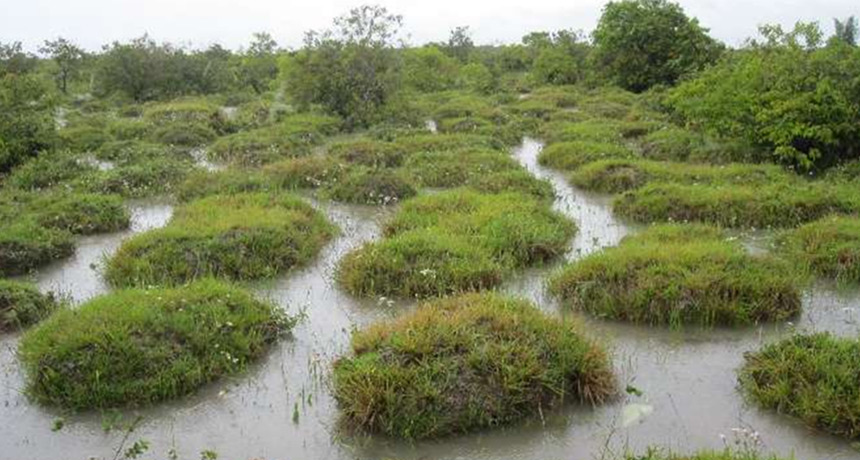These mystery mounds are actually giant piles of earthworm poop

Mounds called surales appear in the rainy season in some spots in the Orinoco Llanos of South America. New research shows that the mounds are made by giant earthworms.
José Iriarte, A. Zangerlé et al/PLOS ONE 2016 (CC-BY 4.0)
- More than 2 years ago
During the rainy season in the Orinoco Llanos of Columbia and Venezuela, an odd landscape feature appears in places: mounds of grassy plants, as big as five meters across and two meters tall, surrounded by water. Traversing this landscape, called surales, requires either hopping from mound to mound or trudging through the boggy bits in between.
Locals and scientists have generally agreed that some kind of earthworm creates the mounds, but what species and how it does so has been a mystery. Now Anne Zangerlé of the Braunschweig University of Technology in Germany and colleagues report that they’ve found the culprit — giant Andiorrhinus earthworms, which can grow to a meter in length as juveniles. And the mounds themselves, the team reports May 11 in PLOS ONE, are actually made mostly of earthworm poop.
Zangerlé and her colleagues used Google Earth images to locate surales landscapes, finding that they come in the shape of both mounds and labyrinths. Leaving the complex labyrinths for a future study, the team studied the mounds and the lands on which they were found in both the rainy and dry seasons. They characterized the soil and the plants and worms living in and on the mounds. And then they pieced all of that information together to come up with a scenario that they think explains the construction of the mounds.

Andiorrhinus earthworms deposit feces, or casts, in towers that give the worms access to the air so they can breathe. The worms then return to the tower, depositing more and more material, building the tower into a mound. These young mounds, the researchers found, are dominated by Andiorrhinus earthworms. But over time, as the mounds get even bigger, other worm species begin to make their home there, as well as plants and, eventually, if the mounds get big enough, trees.
The Andiorrhinus earthworms tend to stay around the same mound because, as they build, they excavate soil from the region around the mound. That moat gets deeper and deeper until it becomes a barrier to the giant earthworm that created it.
The researchers don’t quite understand everything that is happening in the system. For example, there could be an as-yet-unknown end stage to mound development, or some kind of equilibrium state for the landscape. But they note that “these ecosystems are under threat from industrial agriculture, and are being leveled to make way for highly intensified commercial production of rice.” Because of that, they say, there is a risk that these wonderfully complex and mysterious systems could disappear before anyone fully understands what made them in the first place.





